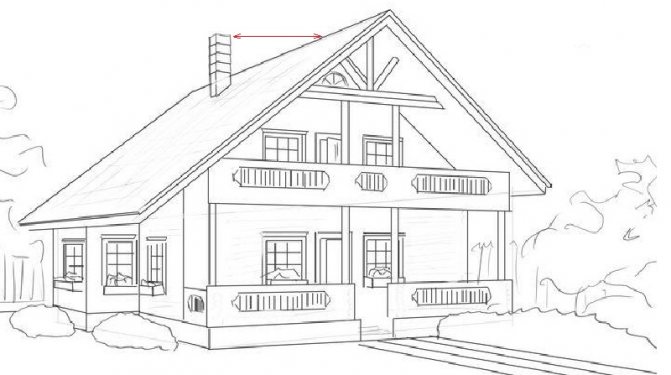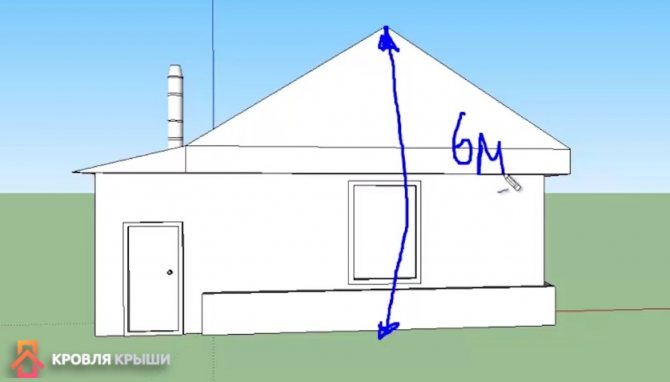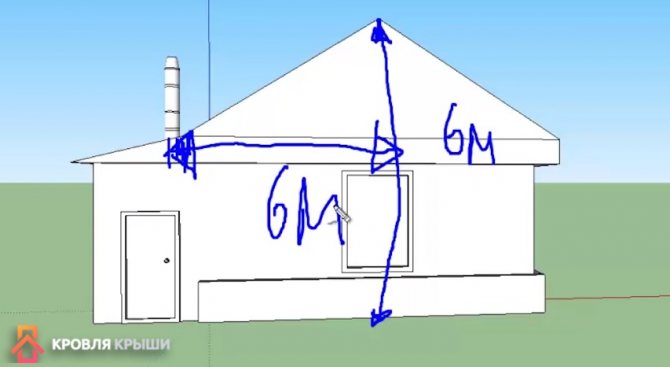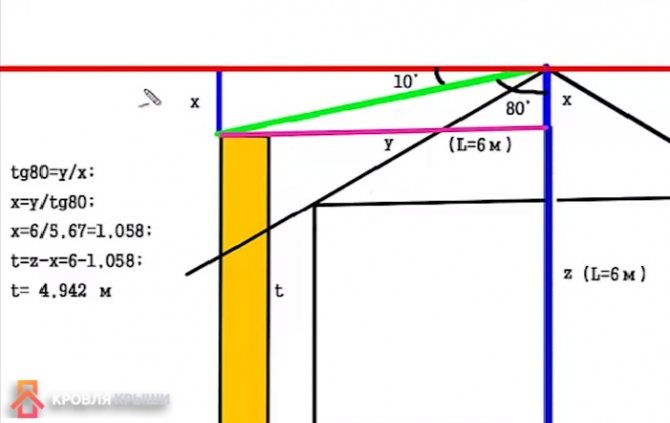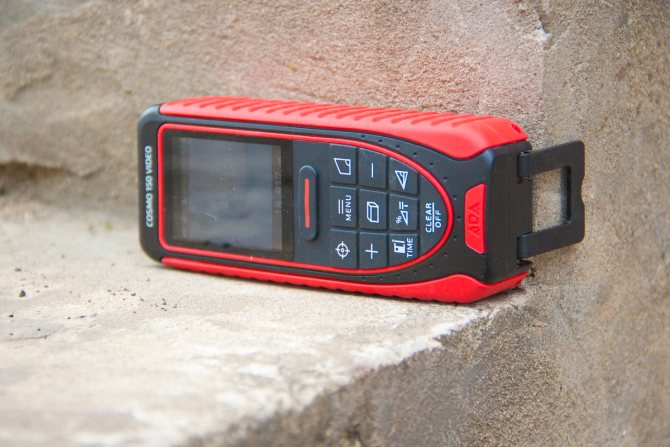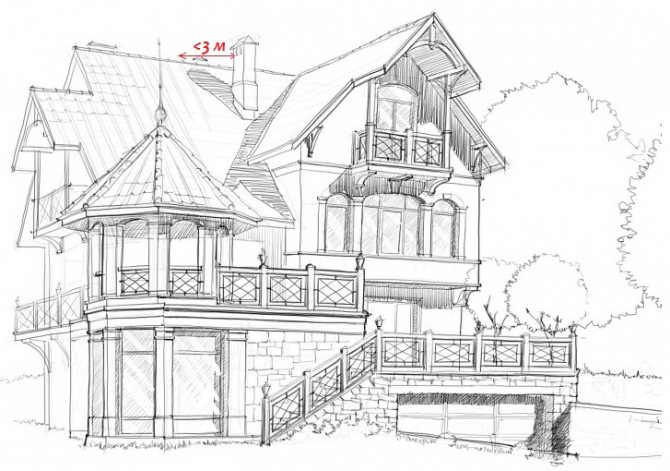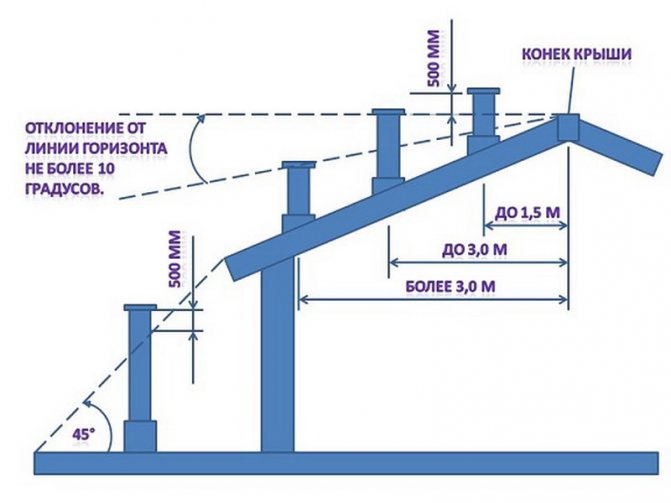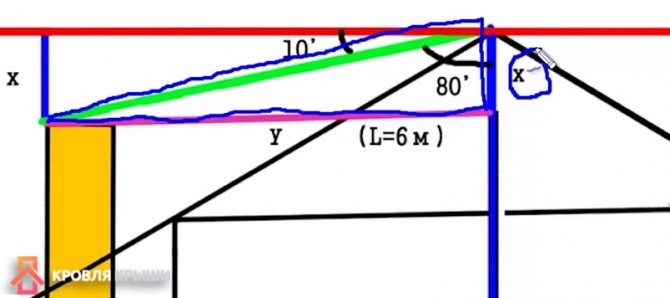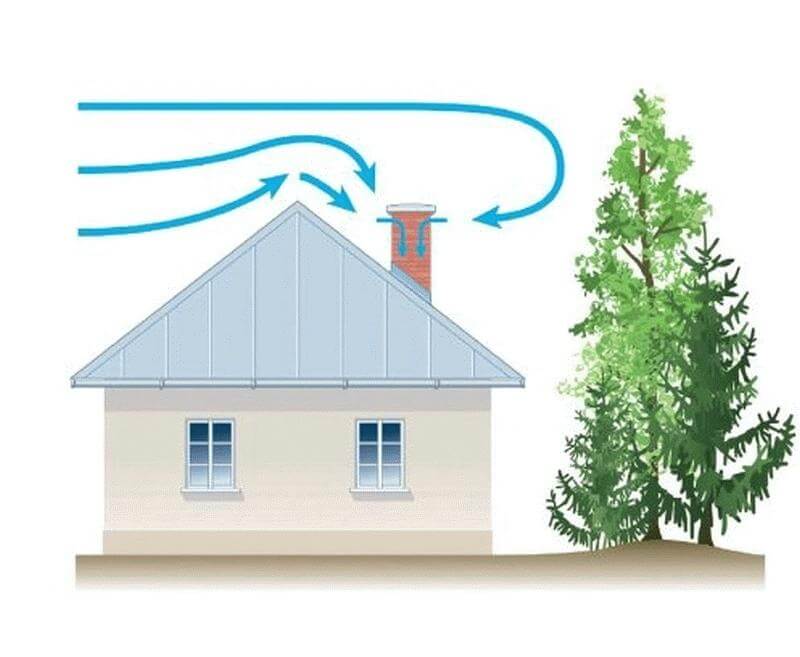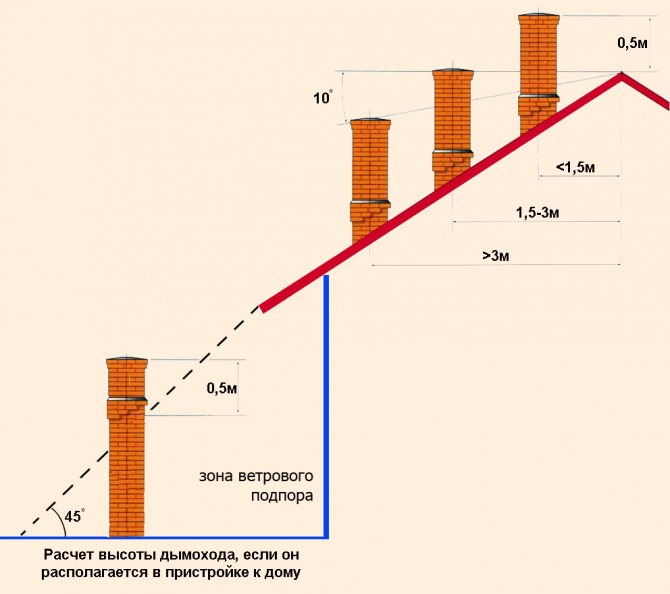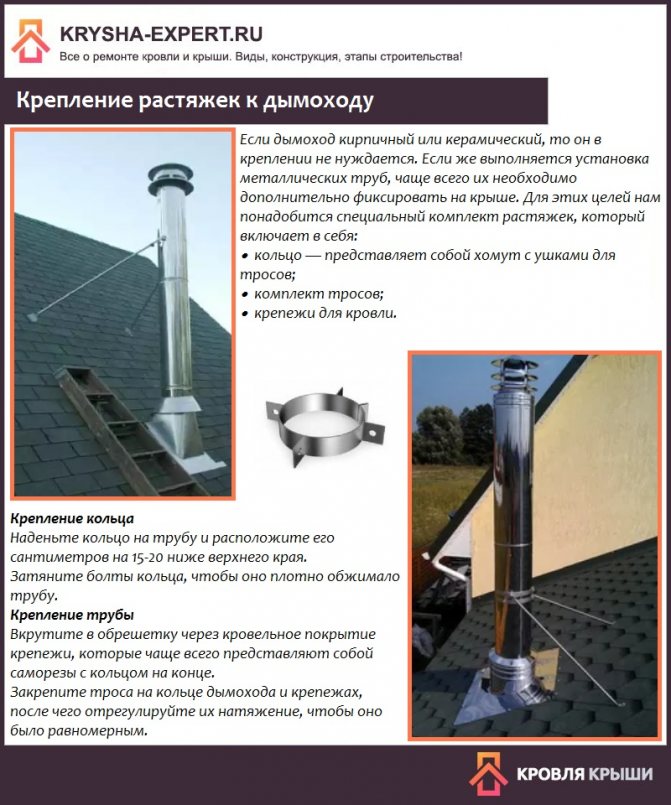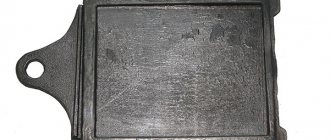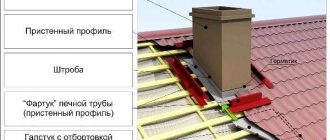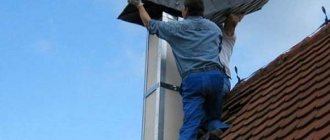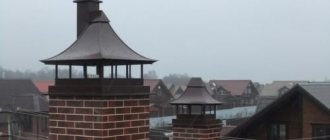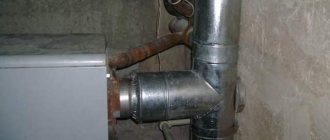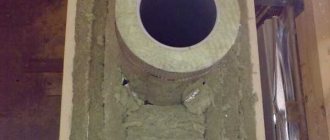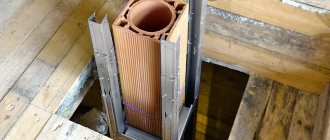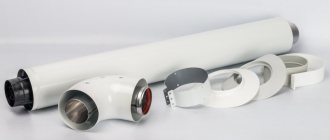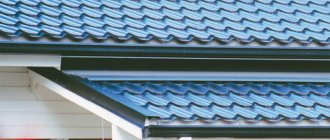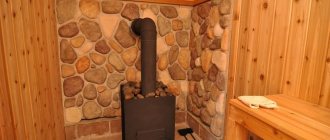When installing a fireplace, special attention should be paid to the installation of the chimney. The durability and reliability of the fireplace, as well as the safety of the inhabitants of the house, depend on it. In addition, a chimney is required for any heating appliance that is capable of producing carbon monoxide. The more such devices in the house, the more difficult it is to equip a system for removing combustion products.
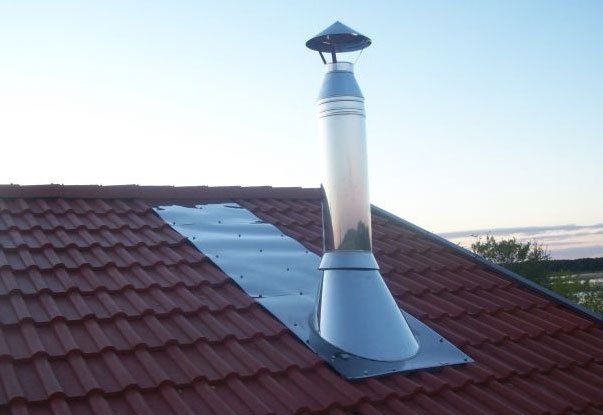
The chimney has a number of parameters that cannot be neglected during its installation, one of which is its height relative to the roof ridge. The level of draft required for the correct combustion process depends on the height of the chimney.
What is a ridge?
The ridge is the upper edge of the roof structure. This element connects the roof slopes, the planes of which converge on it in one line. Since the ridge is the top point of the roof, the height of the roof is determined by its location.
NOTE!
This element performs the functions of protection and ventilation.... It closes the slope joints, preventing moisture and dirt from entering the inner space of the roofing cake. At the same time, circulating air masses come out through the ridge.
Determining the height of the roof is important not only for wind and snow resistance purposes. Most roofing materials have clear ranges of possible slope angles for their installation.... When installing heavy materials, it is necessary to minimize the load per unit area of the roof base; for this, the slope angle (respectively, and the ridge height) increases.
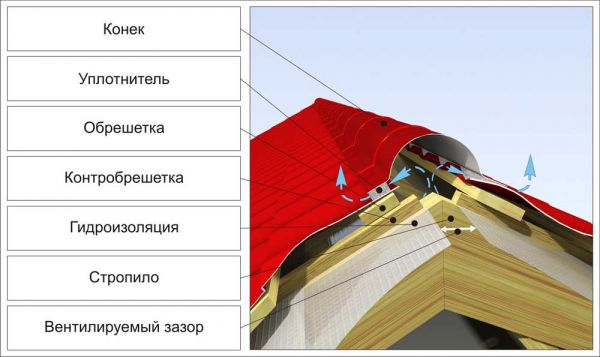

Roof ridge
If an attic space is planned in the house, then the range of possible slope angles is limited by the requirements for the maintenance of the premises and for its fire safety. For residential attics, requirements for the convenience of moving around the room are added, depending on the height of the residents.
Tips & Tricks
Sometimes in the house, in addition to the stove, a fireplace or a gas water heater needs to remove smoke. Of course, removing the chimney for every appliance is not an option. In this situation, experts recommend making a combined pipe with several channels; it is imperative to take into account the power of each device, as well as the type of fuel and the amount of products being discharged.
Taking into account the general recommendations of professionals, you can achieve high-quality work and design devices, namely:
- when installing a brick chimney, the masonry must be dense;
- so that there is no heavy load on the building, they provide a transition to pipes in the attic;
- it is recommended to install a metal and asbestos pipe only vertically;
- so that dirt and birds do not get into the chimney, a special umbrella is put on the top;
- if the height of the structure is more than 1.2 m, it must additionally be fastened with guy wires.
Chimney height relative to the roof ridge
The correct relative position of the ridge and the chimney allows you to ensure a constant and complete exit of smoke from the chimney.
The main condition for the occurrence of traction is the wind effect on the chimney, which creates a zone of rarefied air near its walls, into which internal gas flows rush.
If there is an obstacle in the path of the wind (for example, a ridge), and the chimney is not properly blown, then the draft will be insufficient, flue gases will accumulate in the chimney and in the premises of the building.
Pipe height relative to the roof ridge determined by SNiP 41-01-2003, which regulates the issues of heating and ventilation.
Building codes have the following requirements:
- The minimum length of the elevation of the chimney above the ridge is 50 centimeters in those caseswhen the distance between these elements equal to 1.5 m or less.
- When the distance between the elements is 1.5 - 3 m the mouth of the chimney should be at the same level with the ridge or slightly higher than it.
- When the distance between the elements 3 m or more, the chimney mouth should not be below the linedrawn from the ridge down towards the horizon at an angle of 10 degrees.
When calculating, it is worth paying attention to the requirements for the minimum length of the entire smoke channel, which is 5 meters.
IMPORTANT!
It is recommended to locate chimneys as close as possible to ridge, as this minimizes the retention of wind flows by this element and allows you to locate most of the chimney inside the building.
When designing a chimney more than 3 meters away from the ridge, difficulties may arise, since it is difficult to determine the ten-degree angle "by eye".
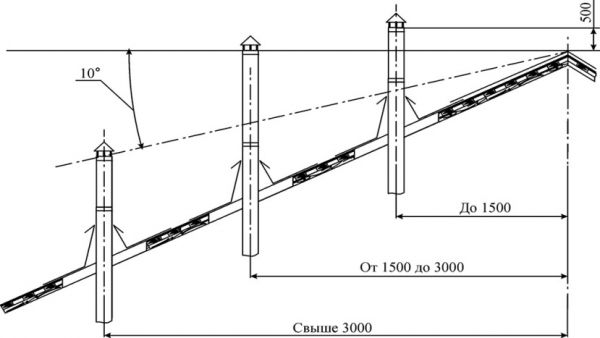

Chimney height relative to the ridge
The geometric method will help to ensure the accuracy of the calculations: in accordance with the scale, a schematic drawing of the roof is carried out with a marked axis of symmetry of the chimney (that is, the location should already be known), from the top point (ridge) a horizontal line is drawn parallel to the base of the triangle (span), at the point of intersection of the ridge and the horizontal, an angle of 10 degrees is laid.
In accordance with the angle, a straight line is drawn from the same point - the place where it intersects with the axis of symmetry of the chimney will determine its height.
Chimney value and smoke draft
The gases rise through the chimney on their own under the influence of several physical forces. The smoke generated during combustion is lighter than air, it rises upward. Its lightness is due to the temperature. As you know, the more the gas is heated, the fewer its molecules are contained in a unit volume and the lighter it is by itself. Light gases always go up.
In addition, the difference in pressure and temperature between the air outside and the gases inside is important. This difference, as it were, draws out the gases from the chimney. This process is called cravings. Thrust occurs when there is a differential pressure. From a physical point of view, thrust is the pressure difference.
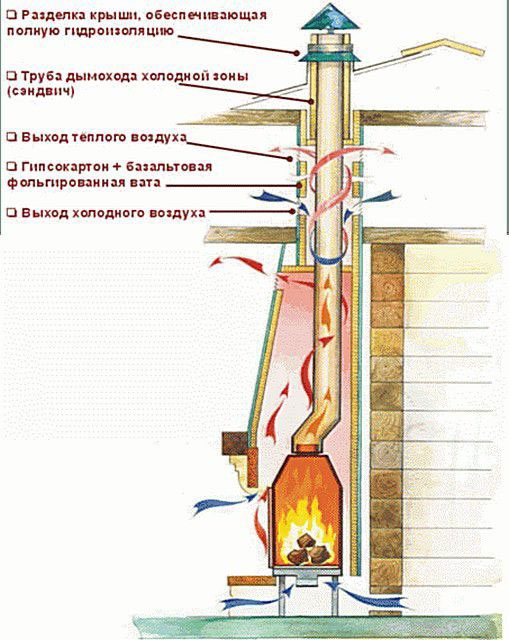

In chimneys with natural, passive draft, the force of Archimedes acts. The air below is as rarefied as possible, since it has a high temperature. Its density is minimal. The air above, outside the house, is minimally rarefied because it is cold.
Its density is higher. It happens like this: heavy cold air descends down the chimney and squeezes warm light air upward, thus the smoke rises through the chimney and is discharged outside. As long as the heater is running, the air at the bottom of the pipe will be warmer than outside.
It is important! The greater the temperature difference, the higher the thrust. Therefore, good draft requires a good heater and cold weather.
Temperature differences aren't the only factor affecting traction, however.
We recommend that you familiarize yourself with: Arrangement of a stove chimney - varieties and how to do it yourself
How to calculate the height of the ridge of a gable roof
The height of the ridge of a gable roof is calculated in two ways: schematic and mathematical... The accuracy of the results obtained is approximately the same for them, since they are based on similar principles of trigonometry.
Both methods assume that the ridge height is determined from the known slope angles and the length of the roof span.
Mathematical calculation is carried out using the formula c = a × tan b, where:
- C is the length of the skate;
- a is half the length of the span;
- b is the angle of inclination of the roof.
The use of this formula is due to the fact that the construction of a gable roof is an isosceles triangle, which is divided by its height into two rectangular ones.
A schematic calculation involves the construction of a triangle with a shape similar to the shape of the roof in a strictly maintained scale. The most convenient scale for drawings is 1: 100, where 1 centimeter in graphical terms corresponds to 1 meter of real indicators.
First, you need to draw a line of the roof span, which will be the base of the triangle. Then its middle is found, from which the axis of symmetry is drawn. With the help of a protractor, the set slope angle is laid from the ends of this line. In accordance with the marked angle, you need to draw a line. The point at which it will intersect with the axis of symmetry will become the approximate location of the ridge.
NOTE!
To the obtained indicators, the thickness of the ridge board and others are added additional elements installed in the upper part of the structure.
The distance from the base to the point of intersection of the axis of symmetry with the ramp line is measured and scaled to the actual height of the ridge.
Despite the possible errors associated with the inaccuracy of the executed drawings, the graphical method allows you to get good results.
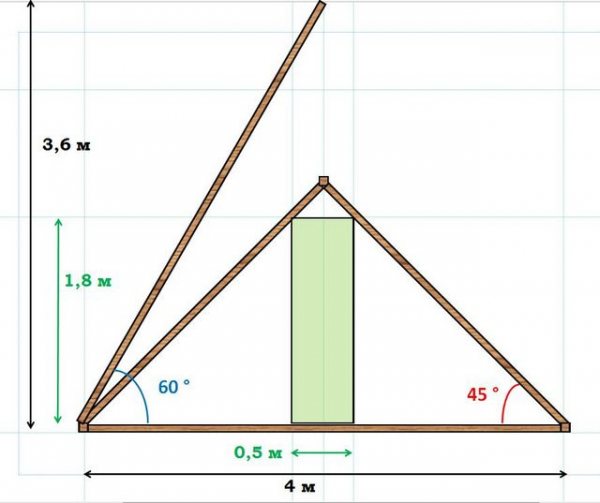

Ridge height calculation
Calculation of the duct diameter and duct height
The calculation of a rectangular or circular section of the ventilation duct is carried out in the presence of 2 parameters - the air flow rate and air exchange in the premises. With forced draft, the air exchange is replaced by the fan power. The parameter is written in the accompanying documents for the product. Air exchange is calculated based on the rate of SNiP for a particular room. The flow velocity in the duct should usually not exceed 5 m / s, but sometimes it is increased to 10 m / s.
Standards
Air exchange rates in residential and utility rooms
During normal operation of ventilation, the air in the room is constantly renewed. According to the requirements of SNiP and SanPiN, standards are established in residential and non-residential rooms, baths, toilets, kitchens, and other special rooms.
Minimum rates - frequency rate per hour or cubic hour for single-family residential buildings:
- residential premises with the constant presence of residents - at least one volume per hour;
- kitchen - 60 m³ / hour;
- bathroom, bathroom - 25 m³ / hour;
- other premises - not less than 0.2 air volume per hour.
The requirements for the "Code of Rules SP 60" are based on the norms for 1 person in premises with permanent residence:
- with an area of less than 20 sq. m / person - 30 m³ / hour, but not less than 0.35 volume per hour;
- with an area of more than 20 sq. m / person - 3 m³ / hour per 1 sq. m.
In swimming pools, saunas, ventilation must be forced to prevent the formation of mold.
"Code of rules SP 54" for residential multi-apartment buildings gives other conditions:
- bedroom, living room - 1 exchange per hour;
- cabinet - 0.5 volume;
- utility rooms - 0.2 volume per hour;
- sports facilities - 80 m³ / hour;
- kitchen with electric stove - 60 m³ / hour; 100 m³ / hour is added to the gas one;
- bath, toilet - 25 m³ / hour;
- sauna - 10 m³ / hour for each visitor.
According to the table
A special algorithm allows you to calculate the diameter of the ventilation pipe, based on the table in SNiP. The height of the ventilation pipe above the roof of a private house depends on the diameter and is determined by the cells of the table, where the width of the pipes is hammered in the left column, and the height is in the top line in mm. This takes into account the location from the ridge of the house, the shape of the ceiling, the distance of the ventilation duct from the chimney pipe.
By electronic calculator
A special calculator calculates the norms depending on the entered indicators: the area of the room, the height of the ceiling, the number of people, the type of room. The calculator takes into account the main indicators. It is advisable to carry out several calculations and select the maximum values for each of the premises.
Chimney types
The chimney is another functional element of the building, the location and height of which is regulated by building codes.
There are several ways to classify chimneys.
Chimneys are distinguished by location:
- wall (located inside the main walls);
- indigenous (not connected to the wall and located at a distance from it in the interior of the building);
- external (pass through the facade of the building).
The main classification method is to distinguish the types of chimneys according to the material of manufacture:
- Brick... They are distinguished by fire safety and high heat capacity, but their maintenance requires a lot of time and effort, and the draft of a brick chimney is relatively low.
- Steel single-circuit... Inexpensive and easy to maintain, but wear out quickly and require additional fire safety.
- Sandwiches... A more advanced and expensive version of single-circuit chimneys, where a layer of non-combustible material is located between the layers of steel.
- Ceramic... Fire resistant, durable, easy to install and maintain, but very expensive.
- Asbestos-cement... The cheapest variation, but its performance is at a low level: asbestos-cement chimneys quickly become clogged with soot and burn out. To avoid a fire in the house due to the ignition of soot, the pipes must be constantly cleaned.
- Polymer... Inexpensive, but not sufficiently fireproof chimneys.
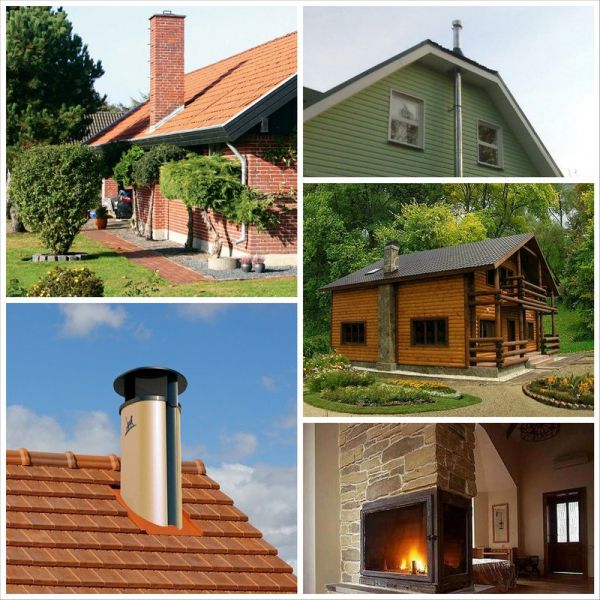

Chimney types
How does the chimney cross-section affect its height?
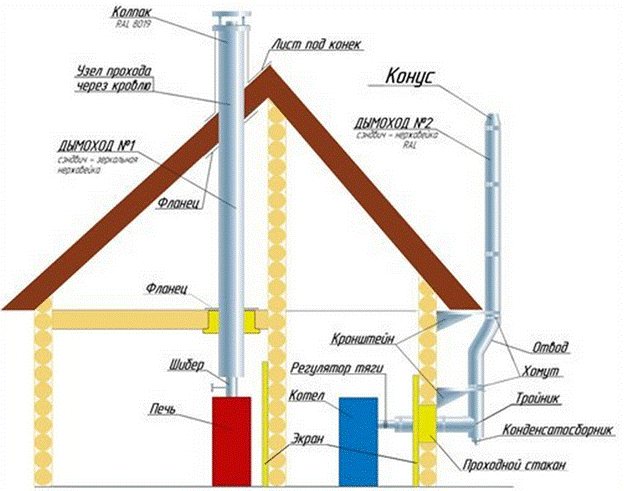

Round chimney
In addition to the fact that the height of the flue ducts is regulated by the requirements of SNiP, its cross section and internal shape must be taken into account. These parameters also affect the normal functioning of heating devices and their efficiency.
According to the laws of physics, warm air - in our case, flue gases - as it heats up, rises up. And the closer it is to the outside, the more it cools, as a result of which traction is formed. Accordingly, a large chimney cross-section, it would seem, should create better draft. But in reality this is not always the case. The larger the internal section, the faster the heated air cools down, while releasing more condensate. And it negatively affects the quality of this very traction.
What is the expected way out? It is possible, by increasing the height of the pipe, to reduce its cross section. In this case, the draft will be so large that it can lead to a loss of efficiency of the heating boiler or stove. After all, the flow of cold air from below will be increased, due to which the heating of the heating device itself will be insufficient. This means that it will take more fuel consumption and time to warm up.
With a high chimney and insufficient inner diameter, the draft will also not be enough for the normal operation of the device. In addition, smoke and carbon monoxide gases can be thrown into the room. To prevent this from happening, and the heating devices worked with full efficiency and performance, it is necessary to calculate all the parameters using a calculator or by inviting specialists.
Chimney for solid fuel boiler
For solid fuel boilers, the length of the chimney is the most important parameter. If the length is insufficient, then the traction will be poor. It is this that can at any time lead to its "overturning", due to which carbon monoxide and other combustion products will penetrate into the room.
The required chimney height for a solid fuel boiler is prescribed by the manufacturer in the passport for the boiler unit and is carefully calculated by the engineers at the design stage. That is why, in order to eliminate errors associated with independent calculations of the chimney, its length and minimum permissible diameter, it is best to use factory recommendations.

